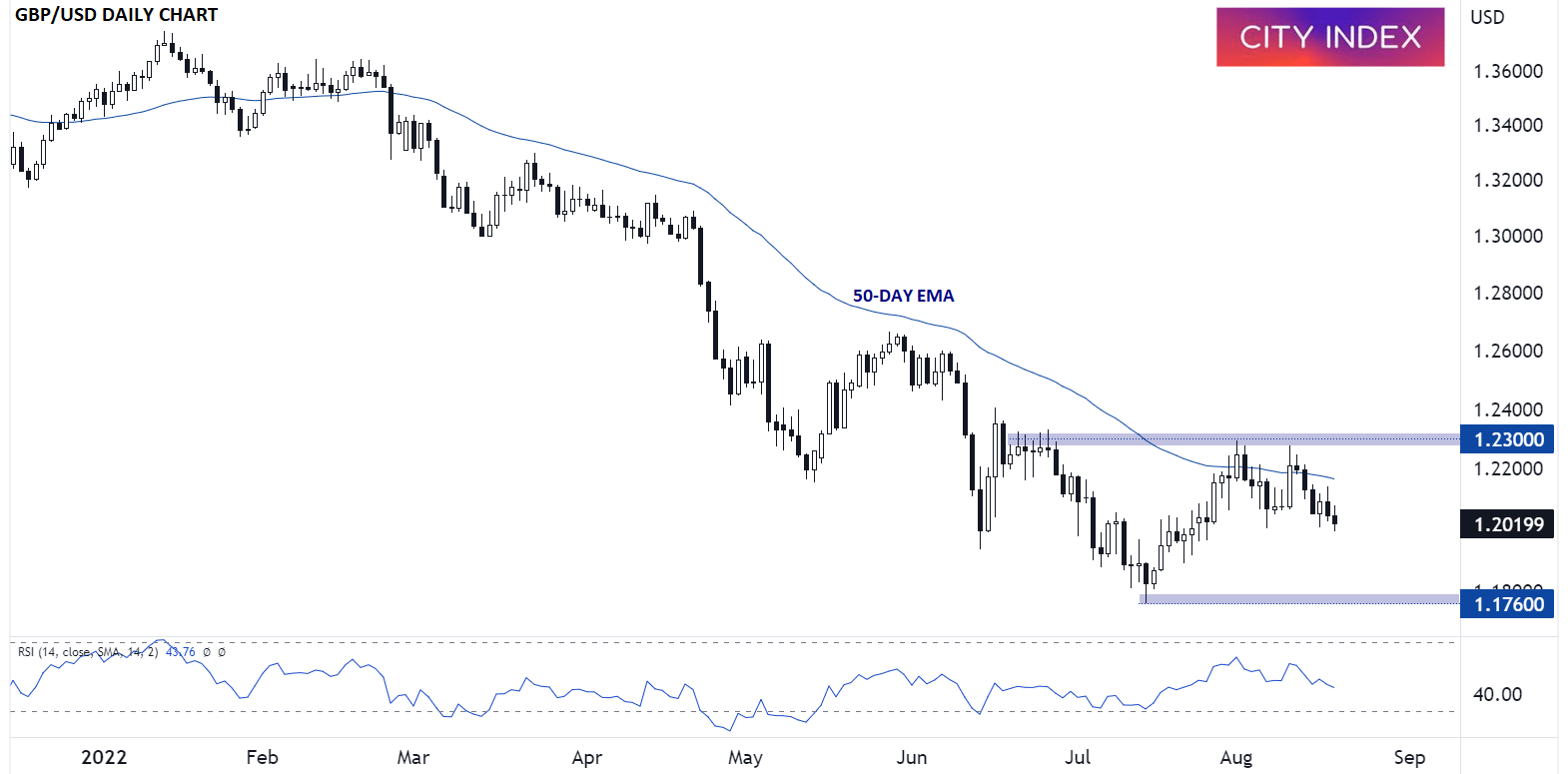
Earlier this week, we discussed the political backdrop, candidates, and expected policies for traders to watch around next month’s UK Conservative Party leadership election (see “2022 Conservative Party leadership election: Who will be the UK’s next PM?” for more). Now, we wanted to examine how a victory by either candidate could influence the pound sterling.
Why the UK PM election may NOT lead to big moves in GBP
Before we get too deep, it’s important to note that traders generally overestimate the impact of politics on markets; after all, politicians often have to “water down” their proposals to get them passed through the rest of the government apparatus and the majority of factors that drive markets on a day-to-day basis sit well outside the realm of politics. Factors like international trade, monetary policy, supply chains, business confidence, and the complex interactions of millions of traders across the globe tend to have a bigger influence on markets than any individual politician’s policies, even if that politician is the Prime Minister!
The other reason asset prices tend to see less movement around elections than many traders expect is that markets are always forward looking. In other words, traders don’t wait until an election is concluded to start trading on it; indeed, since the moment of Boris Johnson’s resignation (and likely before), traders have been anticipating who the next Prime Minister will be and the policies that he or she will ultimately be able to enact. With Liz Truss currently enjoying a healthy lead in the polls, we may see more limited market moves if she ultimately prevails as traders are already “pricing in” that scenario; by contrast, a surprise victory by Rishi Sunak would catch more traders offside and may lead to more volatile price adjustments.
Truss or Sunak: Who is better for GBP?
When it comes to their economic policies, the clearest difference between the two UK PM candidates revolves around the level of government spending. As we outlined in our initial article, Truss is in favor of immediate tax cuts and more aggressive increases in defense spending, whereas Sunak has expressed a desire to get inflation under control first, then consider increasing the government deficit.
The other significant difference between the candidates for forex traders to watch is their policy around the BOE. Truss has staked out a more antagonistic position toward the 300+ year old institution, suggesting that she would favor a more explicit focus on price pressures; by contrast, Sunak has been relatively quiet on the BOE’s mandate.
In essence, Truss is arguing for looser fiscal policy and tighter monetary policy, a policy stance that has historically supported strength in the underlying currency. Billionaire investor Stanley Druckenmiller outlined a similar setup to his trade in the Deutsche mark in Jack Schwager’s book, The New Market Wizards:
“I never had more conviction about any trade than I did about the long side of the Deutsche mark when the Berlin Wall came down. One of the reasons I was so bullish on the Deutsche mark was a radical currency theory proposed by George Soros in his book, The Alchemy of Finance. His theory was that if a huge deficit were accompanied by an expansionary fiscal policy and tight monetary policy, the country's currency would actually rise. The dollar provided a perfect test case in the 1981-84 period. At the time, the general consensus was that the dollar would decline because of the huge budget deficit. However, because money was attracted into the country by a tight monetary policy, the dollar actually went sharply higher. When the Berlin Wall came down, it was one of those situations that I could see as clear as day. West Germany was about to run up a huge budget deficit to finance the rebuilding of East Germany. At the same time, the Bundesbank was not going to tolerate any inflation. I went headlong into the Deutsche mark. It turned out to be a terrific trade.”
For this reason, a victory by Ms. Truss would likely be a bullish development for the GBP, though traders may want to rein in any extreme optimism as she would inevitably run into some opposition on the way to enacting her agenda. Though Mr. Sunak’s policies aren’t necessarily bearish for the pound (and are arguably more prudent and sustainable over the long-term), a come-from-behind victory for the former hedge fund manager could nonetheless disappoint GBP bulls who were positioned for a victory by Ms. Truss.
GBP/USD technical analysis
As the chart below shows, GBP/USD has been in a well-defined downtrend since the start of the year. After stalling out near its 50-day EMA earlier this month, GBP/USD has pulled back toward the 1.20 handle as we go to press, and it will take a confirmed break above the two-month high in the 1.23 area (perhaps on the back of a Truss victory next month) to erase the bearish bias:

Source: StoneX, TradingView
How to trade with City Index
You can trade with City Index by following these four easy steps:
-
Open an account, or log in if you’re already a customer
• Open an account in the UK
• Open an account in Australia
• Open an account in Singapore
- Search for the market you want to trade in our award-winning platform
- Choose your position and size, and your stop and limit levels
- Place the trade








